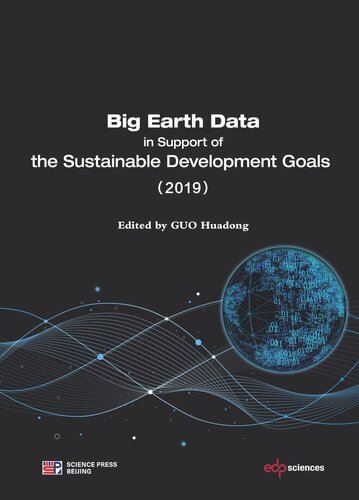

Most ebook files are in PDF format, so you can easily read them using various software such as Foxit Reader or directly on the Google Chrome browser.
Some ebook files are released by publishers in other formats such as .awz, .mobi, .epub, .fb2, etc. You may need to install specific software to read these formats on mobile/PC, such as Calibre.
Please read the tutorial at this link: https://ebookbell.com/faq
We offer FREE conversion to the popular formats you request; however, this may take some time. Therefore, right after payment, please email us, and we will try to provide the service as quickly as possible.
For some exceptional file formats or broken links (if any), please refrain from opening any disputes. Instead, email us first, and we will try to assist within a maximum of 6 hours.
EbookBell Team

5.0
28 reviewsBig Earth Data in Support of the Sustainable Development Goals 2019 presents 27 case studies of “Big Earth Data Science Engineering Program” (CASEarth) on the development of the Sustainable Development Goals (SDGs) indicators and sustainability assessments in six SDGs, including: SDG 2 (Zero Hunger), SDG 6 (Clean Water and Sanitation), SDG 11 (Sustainable Cities and Communities), SDG 13 (Climate Action), SDG 14 (Life below Water), and SDG 15 (Life on Land). These cases provide in-depth, systematic research and evaluation results on the selected SDGs and indicators by means of data, method models, and decision support at global, regional, national and local scales. The 27 case studies covered 20 indicators, with focus varying from constructing databases, building index systems, and evaluating indicator progress. Each case study first clearly lists the corresponding SDG targets and indicators it addresses, and then proceeds with the research methods, data, analysis results, and prospects for future research. It can be seen that Big Earth Data as a new scientific methodology has started demonstrating its great value and potential for applications in monitoring and evaluating SDGs for China and developing countries around the world. The report concludes with a summary of the major progress in Big Earth Data for SDGs and future research priorities.